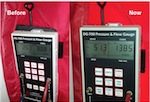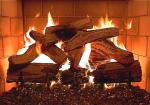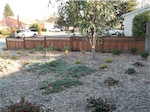Carbon monoxide is a result of incomplete combustion of fossil fuels such as natural gas, wood, or petroleum products. It is colorless and odorless but toxic. Acute poisoning (exposure to high levels at once) can cause neurological damages and can be fatal. Chronic poisoning (exposure to lower levels for long periods of time) can cause headaches, depression, confusion, nausea, etc. Clearly it is best to keep the level of carbon monoxide to a minimum. Details of health hazard from various levels of carbon monoxide exposure can be found in the table at the bottom of this page.
Sources of carbon monoxide in a home can be from any fossil burning appliances such as gas furnace, wood furnace, gas hot water heater, diesel heater, gas or wood fireplaces, gas clothes dryer, gas stove, gas oven, diesel powered electric generator. Properly adjusted and maintained appliances burn the fuel more completely so they produce less carbon monoxide but usually still leave some traces of it.
Here are some steps to take to reduce carbon monoxide in a house.
- Install a carbon monoxide detector. The detector will typically sound an alarm if certain carbon monoxide concentration exceeds a threshold that persists for a period of time defined for that threshold. For example, the alarm will sound if a concentration of 100ppm (parts per million) persists in tens of minutes, or if a concentration of 400ppm persists in several minutes. Some States have regulations about carbon monoxide detectors in homes. For instance, California now requires that single and multi-family residential properties using fossil fuel to be equipped with carbon monoxide detectors.
- Locate furnaces and water heaters outside of living spaces, such as an external closet or a garage if possible and practical. If the closet or garage is attached to the house, make sure all gaps and cracks on the adjoining wall are sealed. Doors to garages should be sealed.
- Install flues properly for all fossil fuel burning furnaces, heaters, fire places and clothes dryers. Make sure that the flues are open to vent air out while operating and that there is no leakage into any part of the house (living space, attic or crawl space). This is particularly important for fireplaces as many fireplace flues can be opened or closed. Closing the flue when a fireplace is not in use will reduce the amount of cold air from coming in. However, it is critical to open the flue before using the fireplace.
- Install an exhaust fan in the kitchen close to the stove and gas oven.
Exhaust fans in bathrooms, kitchen and from clothes dryers pose a separate challenge, called backdraft, particularly for homes that are well air-sealed. As the exhaust fans pull air from the house, outside air must enter the house to make up for the lost. If a house is tightly sealed and windows are closed, the likely place for make-up air to enter will be through the flues of fireplaces, furnaces and water heaters. This is backdraft. If these appliances are being used, some of the unburnt gas such as carbon monoxide can re-enter the home rather than exiting the flue.
- Ensure that there is adequate fresh air to make up for the lost air while operating exhaust fans. This can be achieve in one of two ways
- Open enough windows if weather and safety permit.
- Install a mechanical ventilation system to balance the exhausted air with incoming air. Ventilation systems are useful for providing fresh air for occupants whether appliances are in use or not. There are mechanical ventilation systems, called Heat Recovery Ventilator and Energy Recovery Ventilator, that can use the indoor air to preheat or pre-cool the incoming air during heating or cooling season. These HRVs and ERVs can lower the energy required to condition the incoming air. Some States, such as California, are requiring mechanical ventilation systems for new homes or for substantial additions to existing homes.
- Finally, have a combustion safety test performed by a certified professional to ensure everything is working well under different conditions. Have the fossil fuel burning appliances serviced, cleaned and adjusted annually.
Potential Health Hazard From Carbon Monoxide Exposure
| CO Concentration | Symptoms |
|---|---|
| 35 ppm (0.0035%) | Headache and dizziness within six to eight hours of constant exposure |
| 100 ppm (0.01%) | Slight headache in two to three hours |
| 200 ppm (0.02%) | Slight headache within two to three hours; loss of judgment |
| 400 ppm (0.04%) | Frontal headache within one to two hours |
| 800 ppm (0.08%) | Dizziness, nausea, and convulsions within 45 min; insensible within 2 hours |
| 1,600 ppm (0.16%) | Headache, tachycardia, dizziness, and nausea within 20 min; death in less than 2 hours |
| 3,200 ppm (0.32%) | Headache, dizziness and nausea in five to ten minutes. Death within 30 minutes. |
| 6,400 ppm (0.64%) | Headache and dizziness in one to two minutes. Convulsions, respiratory arrest, and death in less than 20 minutes. |
| 12,800 ppm (1.28%) | Unconsciousness after 2-3 breaths. Death in less than three minutes. |







